The Detroit screening of Train Station has been booked
Tuesday, February 7
7pm at the Main Art Theatre in Royal Oak, Michigan.
Save the date! Ticket information will be available on our website soon.
Save the date! Ticket information will be available on our website soon.
On February 15, 2017, Train Station gets its one-night only Chicago Debut at the beautiful Music Box Theatre, the windy city’s premiere venue for independent, foreign, cult and classic films. At least two directors plus members of the Chicago and Detroit cast and crew will be present. Tickets go on sale January 2nd on the Music Box’s website.
Starting February 3, Train Station will have a week long run at one of Hollywood’s top independent film theaters Arena Cinema. We’re super excited to screen here, and as an extra bonus, the LA Times covers most films screened at Arena--so keep an eye out for their review!
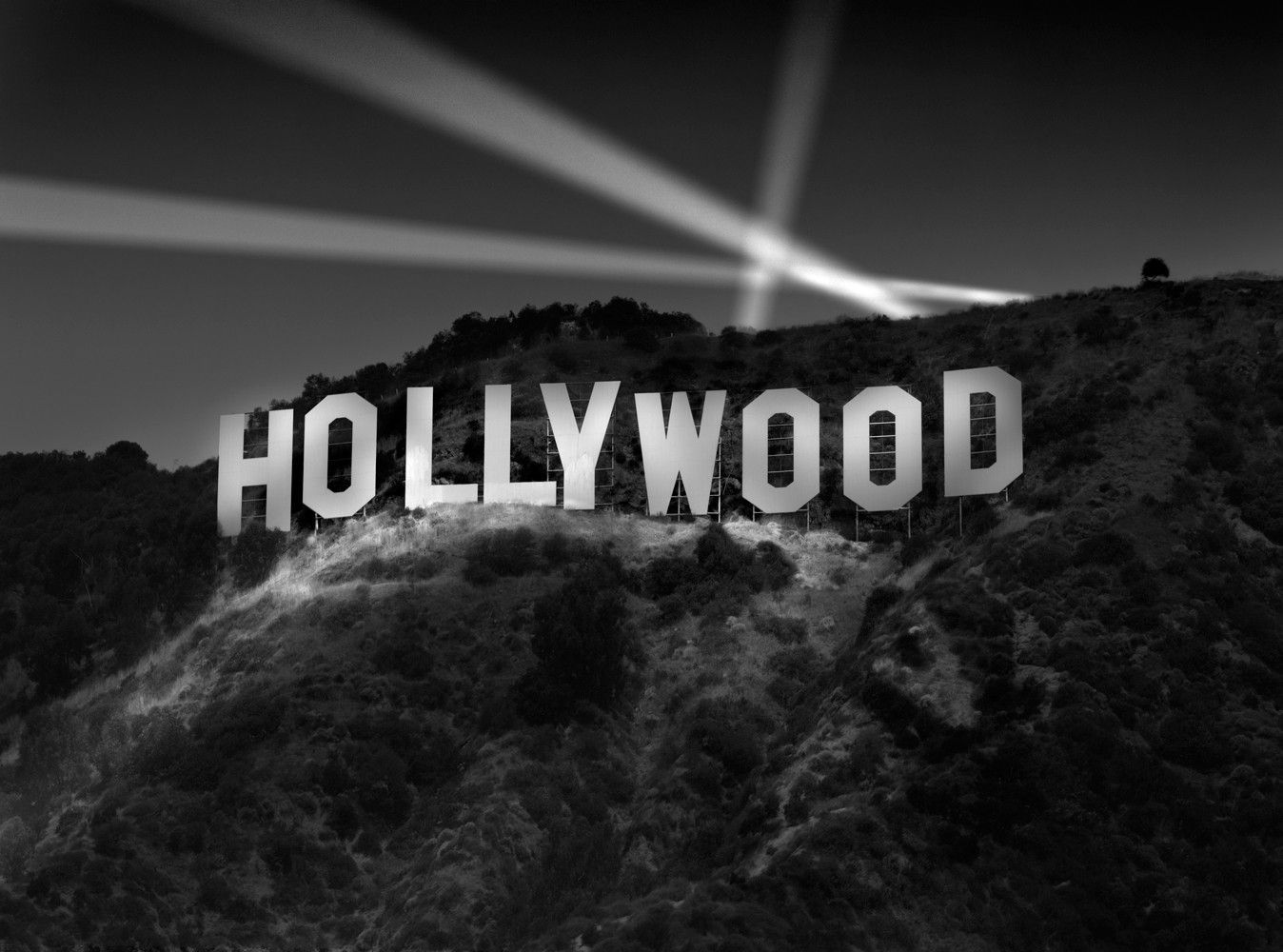
The sole purpose of Calcutta International Cult Film Festival is to develop a film culture that inspires and brings together cross-cultural innovations that enrich people's lives with entertainment: and services that inform, educate and entertain. It's a monthly online international event. Each month World film industry specialists announce 20 Official Selection films in each category and out of them one film receives the Best of Category award. In addition, the best of each month's category will compete with all the others at the end of the year and the best of the best will receive the prestigious Golden Fox Award.

This marks the fourth award win for "Train Station." The Kansas International Film Festival ran from November 4-10, 2016. Filmmakers Daniel Montoya, Kevin Rumley and Yosef Khouwes (three in the center) were in attendance at the Kansas International Film Festival to represent CollabFeature's "Train Station." Here they are collecting the Jury Prize at the awards ceremony.
I’ve worked on a feature film in which I’m a director of a small part of a story and then this story continues by another director in another part of the world. And when it all comes together, it is magic. The film has a life of its own. It is unique and despite the fact that the main character is changing after every few minutes we still feel it is the same film beautifully interwoven to tell one big story. This film is called
. Its a project started by
. I believe this is the future of film making.
Imagine you write a feature film break it into parts and people from all over the world collaborate to make that film. And this is happening. CollabFeature has made a film called The Owner. In this film the main character of the film is a bag that travels all over the world and with the bag, we travel with these endearing characters to find out who is the owner of the bag. This film was directed my 25 directors. Their next project “Train Station” is directed by around 40 directors [I’m one of them].
Another great example of the same style of film making is a film produced by Ridley Scott – Life in a Day. It is a documentary shot all over the world to show the future generation our time in this world and remind them what it is like to be alive. A powerful film and I believe I should not call this a style of film but a new genre. Something like Collaboration Film or Collabfilm. Its a genre that has proven innovative and creative way of telling a story cinematically. This is also helping young directors like me to hone their skills as short filmmaker and yet be a part of bigger story of a feature film.
Through collaboration with actors, technicians, directors, producers, and artists from other field and above all from other parts of the world work together to make a unique story, a collective dream for the world to experience. Imagine the world making a film together to stop wars, unite people with differences or simply to tell a simple story about a relation between a girl and her pet. The ideas are limitless and the science and technology to make this a reality is already here. So what would you like to make as your Collabfilm?
CollabFeature's Guinness World Record-holding film The Owner is now available for FREE on Amazon Prime! You can help The Owner get on the Amazon charts by going here and giving us a rating.
WATCH IT HERE
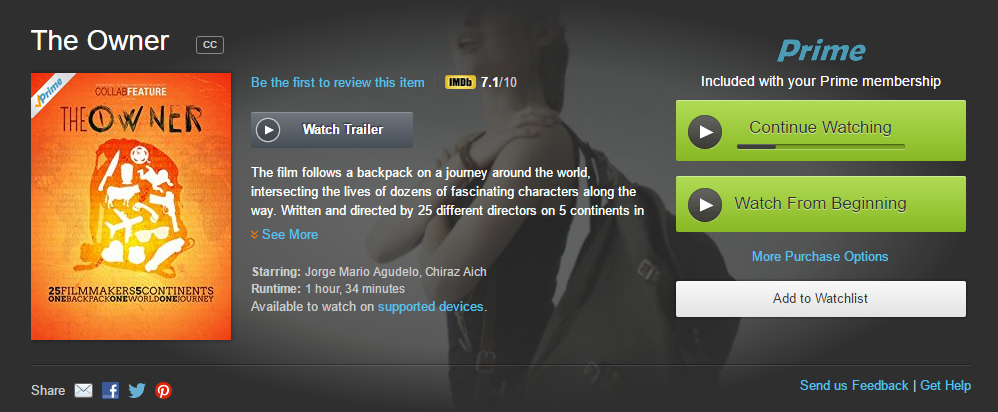
CollabFeature will be a part of the Collaborative Filmmaking: The Rise of Multi-Director Movies Discussion Panel at the NY Media Center during IFP Film Week

CollabFeature Co-Founder/Artistic Director Marty Shea joins two other producers on September 19, 2016 for a panel discussion about the multi-directing movement. IFP Film Week is the place where filmmakers, artists and storytellers cross paths with people who help their projects move forward. Creators get funding, advice and opportunities. Industry insiders get to discover new talent and ideas. The public gets to screen cutting-edge work. It's a space where doors open, info is exchanged and everyone gets creative. Film Week runs from September 17-22, 2016 in Brooklyn, NY. Purchase your passes here.
Train Station is pleased to announce four new film festival screening in the next few months!
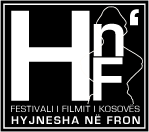
We are honored to be selected as the Opening Night feature for "The Goddess on the Throne" Film Festival
A very appropiate destination for the film as this festival takes place in a train! Films are screened on moving trains from one city to another. CollabFeature filmmaker Tiago de Carvalho from Portugal is being flown to Kosovo for the festival screening on August 31.
BALINALE presents a week of current independent and unique films from Indonesia and around the globe that inspire and entertain our mix of international and domestic audiences.

KIFF attracts local, regional and national work, recognizing visiting filmmakers and screen personalities, and increasing public awareness of independent and classic cinema as a cultural, economic and educational asset. 
Casa Asia Film Week aims to bring the high quality narrative art of the Asian continent to the Spanish public, making it a place of gathering and dialogue of multiple cultures.
We are excited to announce that CollabFeature has won the "Best Feature" award at the the 2016 Los Angeles Diversity Film Festival. LADFF was created to provide filmmakers, actors, and stories of diverse backgrounds with a place to showcase their voice without judgment or insincere reflection; free of stereotypes and degradation. With the goal of establishing a true multicultural experience represented by the world’s independent film community. A perfect fit for CollabFeature and an award we are quite proud of.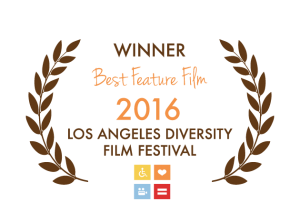
Isazaly Isa and Tony Pietra Arjuna, the team behind CollabFeature's Train Station's Kuala Lumpur segment connected with fellow CollabFeature director Kevin Rumley at their home turf, this July! As a result, a future Malaysian collaboration with his globe-spanning project, Doc' it yourself, is in the realm of possibility. Kevin is the first CF filmmaker who we met in person other than Juliane Block. Let's hope that this occassion wasn't a fluke!
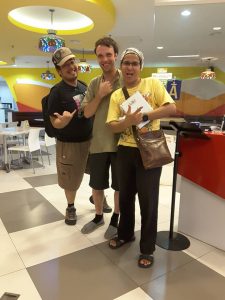
The Featured Filmmaker Series gives you the chance to get to know CollabFeature filmmakers through a series of interviews that give an inside peek into the minds and lives of our collaborators.
Before I introduce the next featured filmmaker for the Train Station, let’s me go slightly back in time.
December 2010.
I had read the Collabfeature success for “The Owner” and was just trying my luck for their next one and so I filled up the forms and send my reels of my past works. Few days later, I received an email from Marty Shea and got selected to be part of the Train Station!
I did not know what to expect nor I have any idea how all this will work out. It was indeed a crazy idea! The initial script stages started really well, using the online platform to collaborate on our stories (and links), but midway of the process, the entire thing started to take a huge turning point - I had to call it off due to personal reasons and bad timing.
Everyone in the group was sad for me having to leave but nevertheless, I had no choice. I apologized to one and all and told them to go ahead and use my initial draft of script or find another director/writer to take over my seat. With a heavy heart, I said goodbye.
2015.
Time passed and I had forgotten about it until recently when my IMDB page notified me of an added screenplay credit for Train Station. I was speechless but happy at the same time and then all those memories came rushing back. My only question was, "Who was it that directed my screenplay?" I search the Directors List and there was this name so very familiar although I had not seen him for a very long time - Tony Pietra Arjuna.
And the story of how we knew each other is an amazing story to tell but perhaps now it’s more about him and how he put them together. Tony had stay true to the original screenplay which I wrote years ago and watching it cometo life visually was a “goosebumps” experience - it was my first ever screenplay directed by someone else!
We met up recently in Kuala Lumpur, after more than 5 years since we last met, and we started having conversations about all the things that happened during my absence from the project. Here are the excerpts from a 3-hour long chat session that we had over coffee…
Isazaly: What actually happened after I dropped out of Train Station?
Tony: Juliane Block (one of the most prominently involved directors in Train Station) contacted me to direct your script for the Malaysian segment. I met Juliane while she was living and making films in Kuala Lumpur. I didn't see her for a while until 2011, when she Skyped me from Berlin (that was when the first CollabFeature project, The Owner, was completed) and recruited me for CollabFeature. As a budding filmmaker, I couldn't refuse the opportunity to get involved in the most pioneering and unique indie/international project at the time. I also felt honored that Juliane shortlisted me for the privilege, so I wanted to make good on that!
I: There will always be hurdles and issues in every production. What was yours?
T: Incessant noise from roadside traffic and torrential rain! We had an ace audio engineer, so he solved that problem.
The other hurdle was overcoming my lack of confidence and rustiness, since that was my first time directing a slice of live-action fiction/narrative after two years of animation and documentaries. I struggled for a bit but I guess that I did alright, in the end.
I: When I saw the final edit of our segment, I get a sensation that it feels very sexy and surreal at the same time. The music really helps. What inspired you to go that direction?
T: I grew up on John Carpenter as a kid while Sergio Leone and Michael Mann ruled my formative years. As an adult, I am still in the process of finding my own voice as a director but I continue to consciously (and unconsciously) take storytelling or stylistic cues from those guys, particularly in the crime and horror/thriller content that I made for local TV. However, David Lynch is my favorite "mentor". Blue Velvet rewired my cinematic brain when I first experienced it as a tween: A life-changing rite of passage from my Amblin/Spielberg-saturated childhood to movie maturity. Our Train Station segment does its best to channel Wild at Heart (I even used Angelo Badalamenti's score as the temp track). Of course I'm losing my mind over the Twin Peaks revival!
I: I really like the collabfeature concept of making movies with multiple directors and it gives us the opportunity to see different styles and culture in one big movie. Amazing right to even see it come together as one film?
T: Hell yeah! Aside from becoming an active part of something that is important, new and potentially revolutionary (which travels in film festivals around the world, to boot), CollabFeature's globe-spanning concept/nature appeals to me on a very personal level. I was raised as a "third culture kid", which simply means that I lived in different countries throughout my youth, thus making me the "global citizen" that I am today. Train Station granted me the chance to rekindle that chapter of my life through my filmmaker aspirations. To once again be in a community of various nations and doing what I love while I'm there? Impossible to resist. Plus, other than English, we all speak the same obvious language.
I: When I wrote the original draft, I figure that maybe the locations only exists in my head, but when I saw the scene, I was like - wow! Just like how I imagine it!
T: The lake scene was shot at a reservoir in a town called Ulu Yam. It's the nearest body of water to the city, so every K.L.-based “tom, dick and harry" production will utilize it! The cafe scene was set in a food court that was converted from a parking lot, beneath a highway ramp in the Petaling Jaya district of K.L. Visually, with all the concrete above and around us, it was an atypical and surreal place to sit and have coffee. It worked for the scene's slightly off-kilter atmosphere.
I: Do you want to do this again, if there are other opportunities like this?
T: I most definitely will and I already have: Not long after Train Station was in full swing, I directed a neo-noir segment of Cuak (aka Second Thoughts), a Malaysian anthology/indie feature with five filmmakers.
The movie was released theatrically in 2014 but it could still be seeking a second life in overseas festivals. It was a team effort that felt much like a mini-CollabFeature in its collaboration model. The experience was creatively fun and invigorating. Everybody involved became like family and when it was over, I was hungry for more. The process was addictive and ultimately rewarding.
I look forward to the same feeling at Train Station's last stop!
I: It’s amazing to think that this film reunite us again after so long we have not met or spoken. I guess the journey is far more greater meaning than the destination itself. Not sure if it will ever going to be screened here in Malaysia (with our strict censorships) but nevertheless, at least I am happy to see it being materialised and completed.
T: It’s been a great pleasure to be finally working with you again and yeah, welcome back to the team and let’s bring the train home!
Interview conducted by Isazaly Isa.
Over the next few weeks, we will be sharing some observations and experiences from the "Director's Corner" of our most recent film, Train Station. Check out the stories, ideas, and experiences that make up one of the world's most unique film experiences!__________________________________________________________________
How did local culture and mentality influence our filmmakers?
For a film that was made with the help of tens of filmmakers from all over the world, we would also expect local culture and mentality to play a part in some of our film's segments.
To some however it was not something that left an imprint on their directing vision. “I don't believe Greek culture or mentality influenced or is visible in my segment.” Athanasia Michopoulou says.
Aditya Pawar shares the same sentiment: ”There is no local or cultural influence in my segment as you can see most of the aesthetics were from Asian cinema.”
Yango González, from Columbia, feels his segment is more the result of “children imagination than a cultural interpretation. The kids could be from anywhere else.” as parents from all over the world can attest.
To those that did feel influenced by local culture, let's look into how the influence worked....
Daniel Montoya: “It had a huge influence! We decided to write the script using a lot common phrases from the South.“
George Korgianitis: “Actually, the local culture and mentality, made this shooting/project possible! The willingness, passion, creativity, hard work and good hearts of all local collaborators who helped make it happen, regardless of the effort or economic rewards. I'm really grateful to them all!”
Some of our filmmakers shared some of their culture's best and worst aspects.
“Local culture and mentality reflected on my segment in many ways. From the dialogues to the costume design for the actresses. While "helping other people" (especially women) is a valued morality in Iran, there are some negative behaviours that we do, mostly unwillingly. So, a part of our culture (both good and bad) can be seen in my segment.” Hesam Dehghani says.
Nicola Barnaba talks about one of man's most harmful emotions: “My segment is about jealousy, and in Italy we know a lot about that. So I thought of the worst reaction a man could have is discovering his wife cheating on him.” Spoiler alert: Things don't end very nicely.
Surya Balakrishnan talks about the contrasting aspects of Mumbai, India, and the influence in had on her segment: “The city has a strange chaos, ones loves it as much as they hate it. I think what reflects in my segment is that their relationship is a love-hate kind. One wants to leave, but they can't. One enjoys being together, yet they don't want to. And they want more from it at all times.”
Todd Felderstein: “Los Angeles is a multi-cultural town. My segment features actors from a variety of cultures, ages and backgrounds, all featured in order to tell the story.
Xavier Agudo: “We shot on location at the Street Fair celebration of the unification of Germany in front of the emblematic Brandenburg Gate. So can´t think of any more influential from the local German culture to find in my segment. However I am not German, so I have an outsider´s vision of what the local culture and mentality is. And trying to bring my own mentality and culture into the German one brings an interesting mix of visions in how the segment was produced.”
In conclusion how much culture you put in when you're cooking your film is a matter of taste, and you can make a very delicious film with or without it. Hmm, I'm suddenly feeling very peckish.
Compiled by Train Station director, Adrian Tudor.
Train Station premiered in November 2015 and is currently making the rounds on the festival circuit. Worldwide release coming 2016. Keep your eyes peeled to CollabFeature.com!
Over the next few weeks, we will be sharing some observations and experiences from the "Director's Corner" of our most recent film, Train Station. Check out the stories, ideas, and experiences that make up one of the world's most unique film experiences!__________________________________________________________________
One of the challenges and source of creative energy in our film Train Station was the fact, that the protagonist was played by different actors. We call him/her “The Man in Brown” or “The Woman in Brown,” depending on her gender. The challenge was to create a character recognizable despite differences in language, age, ethnicity and gender, while still giving each of the Browns something unique.
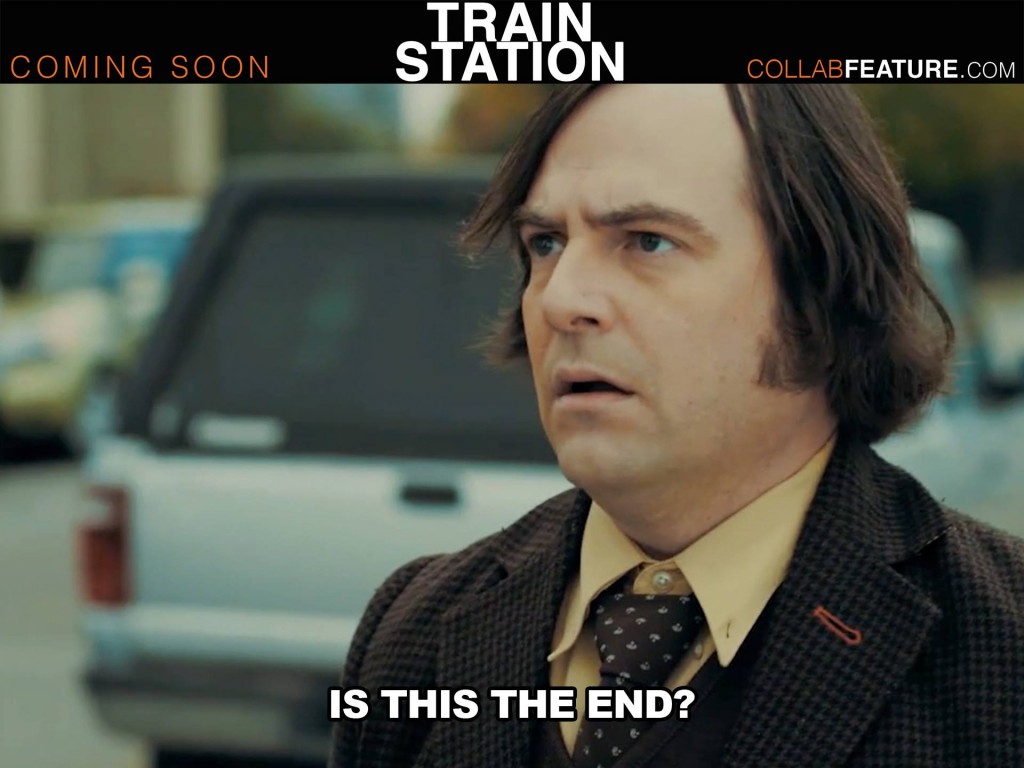 “The Browns in Train Station fall into one of 3 main categories of consequence: 1. Of Betrayal 2. Of Lying 3. Of Doing the right thing. My Brown is in the latter group or segment and does not differ from the other Browns in that group, as their progress is always or ultimately altruistic; nor does my Brown differ from any other Brown in any other segment.” (Craig Lines)
“The Browns in Train Station fall into one of 3 main categories of consequence: 1. Of Betrayal 2. Of Lying 3. Of Doing the right thing. My Brown is in the latter group or segment and does not differ from the other Browns in that group, as their progress is always or ultimately altruistic; nor does my Brown differ from any other Brown in any other segment.” (Craig Lines)
“We change everyday. Every life experience changes us, every decision changes us and we are a different person every day. We learn, we grow up and we change. I believe that the different Browns in Train Station are symbols of our personality through our everyday life. My Brown is as different with the other Browns as we are with ourselves in the next hour!” (Hesam Dehghani)
As a result, the Browns show different character traits: he/she is a guy with a low self-esteem in one segment, and gets spooked very easily in another. He is a good-hearted crook in one, and a child as symbol for his innocence in a different part of the story. However,
“interestingly, none of the film makers during the writing process ever suggested an intrinsically evil or malicious hero. Perhaps this says something about our international cultural influences.” (Craig Lines)
Compiled by Train Station director, Juliane Block.
Train Station premiered in November 2015 and is currently making the rounds on the festival circuit. Worldwide release coming 2016. Keep your eyes peeled to CollabFeature.com!
 Train Station continues its journey on the festival circuit with screenings at three upcoming film festivals. The next stop is Train Station’s African Premiere at the Sudan Independent Film Festival from January 21-27, 2016 (screenings at 4:30pm Mon, Jan 25 & 7:30pm Tues, Jan 26). Then there is a brief stopover at the Berlin Independent Film Festival February 11-17, 2016 (screening is at 6pm on Wednesday, February 17th, tickets available HERE), marking the film's European Premiere. Train Station then travels to Washington, D.C. for its East Coast US Premiere at the DC Independent Film Festival on Thursday, March 10, 2016 (screening time and tickets available soon).
Train Station continues its journey on the festival circuit with screenings at three upcoming film festivals. The next stop is Train Station’s African Premiere at the Sudan Independent Film Festival from January 21-27, 2016 (screenings at 4:30pm Mon, Jan 25 & 7:30pm Tues, Jan 26). Then there is a brief stopover at the Berlin Independent Film Festival February 11-17, 2016 (screening is at 6pm on Wednesday, February 17th, tickets available HERE), marking the film's European Premiere. Train Station then travels to Washington, D.C. for its East Coast US Premiere at the DC Independent Film Festival on Thursday, March 10, 2016 (screening time and tickets available soon).
With Train Station gaining momentum on the festival circuit, CollabFeature is set to break its own Guinness World Record for Most Directors of a Film. The current record is held by its 2012 debut feature, The Owner, which involved 25 directors. Train Station has almost double that number with 40 directors, giving new meaning to the words “collaborative filmmaking”. Always evolving, CollabFeature is constantly proving to have a direct impact on the approach to modern filmmaking.
Train Station, follows a single character, known only as “Person in Brown”, through cities like Tehran, Detroit, Berlin, Athens, New Castle, Chicago, Dubai, Barcelona, Mumbai and more than a dozen other cities in five continents. The main character is played by 40 actors, ranging in age, gender, ethnicity and sexual orientation. Along his/her journey, he/she is presented with choices that trigger different paths, giving us a universal story of fate, decisions and destiny. Train Station unites cultures and breaks language barriers, reminding us that we all live under the same conditions of life in a world full of diversity, options and consequences.
Train Station is thrilled to be screening at festivals around the world, bringing the film to the homes of all of its creators.
The Featured Filmmaker Series gives you the chance to get to know CollabFeature filmmakers through a series of interviews that give an inside peek into the minds and lives of our collaborators.

How has your upbringing and surroundings in Greece manifested in your works; is there anything about Greek culture that you think is evident in your films?
As filmmakers, I feel we bring into our films something personal, something of who we are. In this sense, one could say my upbringing, being part of who I am as a person and artist coming from Greece is also part of my works. Perhaps in the themes I choose to follow, or in the questions I ask, or behind the decisions my characters take? I can’t really say. I don’t think though it is something dominant. I don’t believe one would watch any of my films and say, “she is Greek”. My stories could be taking place anywhere in the world.
 You have been working in many different posts behind the scenes -- if you weren't directing, which one role would be your choice?
You have been working in many different posts behind the scenes -- if you weren't directing, which one role would be your choice?
I love everything that has to do with cinema. If I weren’t to direct, I would choose to be involved in editing. The creativity can be limitless and you always discover a lot in the editing room, same as in a film set.
As part of Train Station, what possibly differentiates you from the other filmmakers on the roster? Conversely, what might you share with them?
I think in “Train Station”, everyone shares the same love and passion for filmmaking, for collaboration and creating something unique. And that uniqueness into our project is each filmmaker’s voice, and this is what differentiates us. And it can be seen in every segment of our film. Even though there are connections and continuity, each segment is different from the other. For me there is never any one way to view a story, and the best stories tend to be ones that teach us a bit of something, while also inspiring us to new thoughts. And I think “Train Station” does that, it inspires its viewers.
4) Regardless of short or long form narratives, what defines your work as a cinematic storyteller?
I think that is still a work in progress to be honest. From what I have done so far, I would say in my films my heroes face an ethical dilemma that challenges them and in a way “forces” them to walk out of their safe zone and take action. I prefer to let the action unfold for the viewer and get him a closer perspective in key moments of the story. But generally I think my cinematic language is still something in development. I have done 6 short films so far and I have learned a lot but I still want to try out so much more, play with different genres too. I think who we are as storytellers evolves and changes with every film.
5) On that note, tell us more about your latest short film, Wolves & Sheep, and the feature that you are developing.
“Wolves & Sheep” was created during the Shooting Lab workshop of the Generation Campus in Moscow in 2013. We were asked to create, shoot and edit a film following 'five obstructions': running time shouldn't exceed one minute, everything would be filmed in one location, there would be no dialogue, just music, the film would have three lead characters and no more than three characters would be in a shot.
It was a creative challenge and I learned a lot from the process. Working the script and getting it to the core of the story, collaborating with Russian actors who I met on the set, getting the story through in just one minute. It was great. I also met some amazing people from around the world and we had a great teacher Rafi Pitts, who was an inspiration to work with.
As for my feature film, it is entitled “Hypnos” and I am very excited about it. It’s a fantasy feature film that combines ancient Greek myths with orthodox prophecies. For me Greek mythology is an endless source of inspiration that oddly enough has not been harvested yet. “Hypnos” is inspired by this literature and attempts to fuse it with key religious elements from the orthodox books and mould it into science fiction. I am collaborating with a very talented scriptwriter on this, Alexandra Dyranis-Maounis, and it is a very creative process.
6) Your filmography, as exemplified by Behind the Veil and In Transit, which are respectively on the subject of discrimination/prejudice and immigration, suggests that you are concerned with themes of human rights and tolerance. Since Greece is in the midst of the migrant/refugee crisis, what are your views on this issue and would you tell a story about it?
It is heartbreaking for me to witness the current refugee crisis. All those people, children, losing their lives in the Aegean Sea. I read recently there are more displaced people and refugees now than at any other time in recorded history and in numbers not seen since World War II. It saddens me to see history repeating itself. Greece is trying to deal with the situation, but there are many problems in many levels. Add to those the financial crisis my country has been facing the past 5 years, things are quit hard. It is hopeful how the local communities have been helping out along with NGOs and volunteers. Greeks have a long history of being refugees themselves so I think they can relate to all those people looking for a better future in Europe. But this is something that asks for actions on a larger scale. I don’t know though how much there is the will for such actions. Throughout Europe, xenophobia and racism grow rapidly, and nationalist, even far-right parties are gaining ground. At the same time, this is only the beginning of the crisis, because the conditions inciting people to flee their homelands will only worsen. I do hope that as the world changes, Europe can change with it and that sensible proposals will come forward. Films can help people overcome their fears and xenophobia, and thoughts are there for a film.
7) As a participant in an international venture like CollabFeature and having worked across various countries in Europe, do you consider yourself on track to become a "transnational/world cinema" filmmaker?
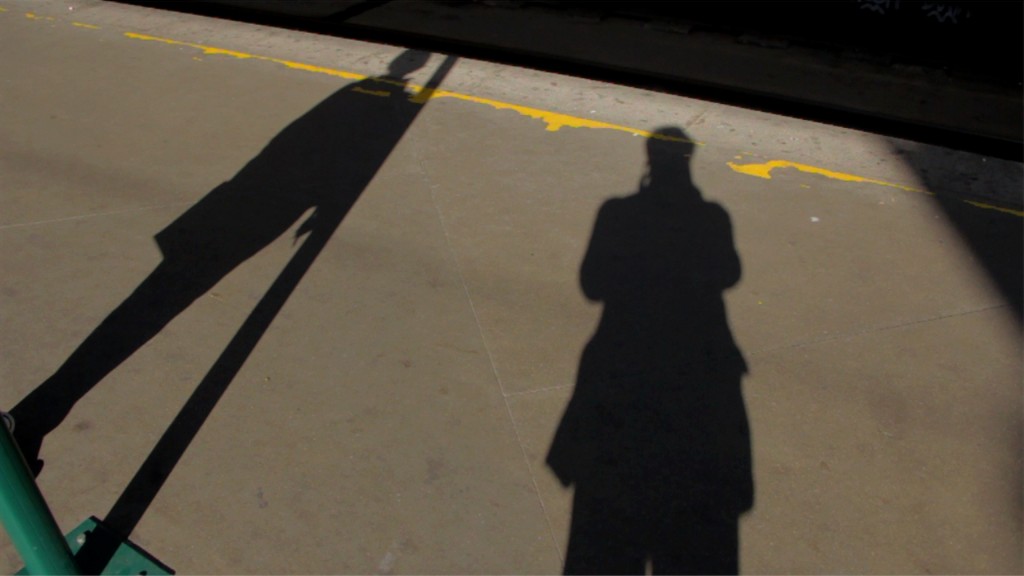 I never thought of it this way before to be honest but I guess you are right. I feel getting to travel, live, and work in a different country, can influence you in many ways and is an experience one should pursue. It gives you a connection with other cultures, engages you in conversations that lead to greater understanding and better appreciation of the people. It shows us how we are similar and different and learn from those characteristics. Through traveling, we’re savoring experiences, which we can then apply to our art. At least for me it is like that. And it has been helpful on a practical level too. It gave me a chance to build my skills, learn how to work with people from different cultural backgrounds and opened up new horizons and different ways to deal with things, which then I could apply in my country. For example being in Canada and volunteering for the TIFF festival was a real eye-opener for me in event management. So yes, I do feel that I have been influenced from my experiences abroad as a person and filmmaker and I do consider my self on track to become a “transnational/world storyteller”. ☺
I never thought of it this way before to be honest but I guess you are right. I feel getting to travel, live, and work in a different country, can influence you in many ways and is an experience one should pursue. It gives you a connection with other cultures, engages you in conversations that lead to greater understanding and better appreciation of the people. It shows us how we are similar and different and learn from those characteristics. Through traveling, we’re savoring experiences, which we can then apply to our art. At least for me it is like that. And it has been helpful on a practical level too. It gave me a chance to build my skills, learn how to work with people from different cultural backgrounds and opened up new horizons and different ways to deal with things, which then I could apply in my country. For example being in Canada and volunteering for the TIFF festival was a real eye-opener for me in event management. So yes, I do feel that I have been influenced from my experiences abroad as a person and filmmaker and I do consider my self on track to become a “transnational/world storyteller”. ☺
BIOGRAPHY Athanasia Michopoulou was born and raised in Athens, Greece, where she took her bachelor degree in Communications and Media Studies by the University of Athens. In 2007 she went to Denmark to study Filmmaking at the European Film College. She has worked ever since in various production posts. For the last 4 years, she has been attached as locations manager and fixer in various projects, from feature films to shorts and documentaries, for Greek and foreign countries. Her biggest passion is filmmaking and her last short “Wolves & Sheep”, completed during the Generation Campus Shooting Set Lab in Moscow, Russia, has been screened in the International Film Festival of Patmos, the 11th Naoussa International Film Festival and the 7th International Cinematography Artfools Festival in Larissa. She is now preparing her feature debut while working on other short scripts.
Athanasia Michopoulou
CHECK OUT ATHANASIA'S VIMEO PAGE
FILMOGRAPHY 2015 – Serious Shit!: short fiction film created during the 1st Kinolab Moscow, Moscow, Russia (password: kinolab) 2013 – Wolves & Sheep: short fiction film created during the Generation Campus Shooting Set Lab, Moscow, Russia (password: campus) 2013 – Behind the veil: short fiction film on discrimination and prejudice created during the International Talent Workshop, Zagreb, Croatia 2013 – “Stamped!”: short fiction film on love in Athens, screened during the 1st Love in Athens Film Festival 2012 – “In Transit”: short fiction documentary on immigration created during the Borderline Lab 2011 - Train Station – Hide the bodies segment: participation in CollabFeature, a group of independent filmmakers from around the world who have come together to create a feature film made up of multiple individual stories (currently in festival circulation) 2010/2012 - “White lies”: short fiction film
First works 2008 - “The promise” (screened during the 3rd Reykjavik International Film Festival as part of the Talent Laboratory (September 24th - 27th, 2009), 2008 - “Letter to the world”, 2006 - “Angelum , 2005 - “Black balloon” (screened during the “3in3 short film competition”)
Interview conducted by Tony Pietra and Deric Ect.
Over the next few weeks, we will be sharing some observations and experiences from the "Director's Corner" of our most recent film, Train Station. Check out the stories, ideas, and experiences that make up one of the world's most unique film experiences!__________________________________________________________________
How did our filmmakers manage to solve some of the problems independent filmmakers face? The main problem everyone faces is the lack of budget.
“But the smaller the budget the more creative you have to be to solve your problems.” says Aditya Pawar.
And where there's no budget you can always count on your friends to help you out as some of our filmmakers can confirm.
Nicola Barnaba: “We didn't have a budget, but a lot of good friends came without problems.”
Rafael Yoshida: “I shot with zero money, but got help from friends.”
Kevin Rumley: “I had to be creative and find ways to make a cheap shoot look amazing and I think I did it.”
Taking the independent filmmaking route also means dealing with limited access to locations or having an uncontrollable environment.
Xavier Agudo: ”We were shooting on a real live street fair with an environment we couldn't control at all. I inserted my actors into this real life environment and let them interact with it. So we had to be constantly aware of things that needed to be adjusted, react to unexpected situations, deal with a crowd surrounding the action and trying to look as invisible as possible as a film crew.”
Some of our filmmakers had to film their segments on one of the battlefields of modern civilization, golf courses:
“Most of the golfers were okay about us being there and we had to keep moving out of the way when the tee was needed for real - which was fine - but there are some complete twats who play golf and we had to grit our teeth when dealing with them as they thought we shouldn't be there. There were a couple of golfers I'd've liked to kick in their balls.”, Craig Lines recalls. This does look like a dangerous place to be.
Daniel Montoya said shooting on a golf course: “put everybody at risk of being hit by a ball. Funny thing is that as in the previous segment, the golfer gets hit by a ball, we ALMOST got hit many times, so, sometimes we were shooting and somebody far away will yell at us to get out of the way and you could see the whole crew and actors moving from side to side running, I'm sure it was entertaining for the regular golfers at that place.”
The moral is stay away from golf courses. And for your own sanity's sake don't look up golf casualties, the statistics will terrify you.
Sometimes a lack of budget means you have to cope with extreme weather conditions like some of our others filmmakers can attest.
Athanasia Michopoulou who shot her segment in mid-July in Athens during a heatwave recalls: ”It was a physical challenge for everyone involved to be filming under the sun at 44 degrees (Celsius). Because of that, we also had problems with the camera which was overheating and we had to stop filming to give it time to get back to normal levels. lots of water, sunscreen and an umbrella saved the day!”
At the other extreme, Hesam Dehgani remembers what shooting his segment was like: “We started the pre-production a few weeks before January. Tehran gets very cold and snowy that time of the year. When we set the shoot dates, all weather forecast websites were telling that we'd have heavy snow in those days. Almost 80% of my segment were happening in outdoor locations so we were a little bit afraid if everything goes well. Fortunately, there was no snow in those days (but the weather was like -10 degree centigrade). The snow started right when we wrapped the shoot!” Hesam managed to dodge one of indie film's most sly adversaries, the weather.
Yango Gonzalez struggled with another formidable opponent: “I had to shoot but it was the rainy season (we have a lot of rainy seasons in Bogota). Just two days before shooting it was raining the whole day. I made a ritual that I've made for other films and that always works. I went to the street where we had to shoot and I made a salt cross and I lit a candle.”
If you have rain problems when you are shooting your film you might want to try this… if you dare awaken the rain spirit.
Compiled by Train Station director, Adrian Tudor.
Train Station premiered in November 2015 and is currently making the rounds on the festival circuit. Worldwide release coming 2016. Keep your eyes peeled to CollabFeature.com!
The Featured Filmmaker Series gives you the chance to get to know CollabFeature filmmakers through a series of interviews that give an inside peek into the minds and lives of our collaborators.
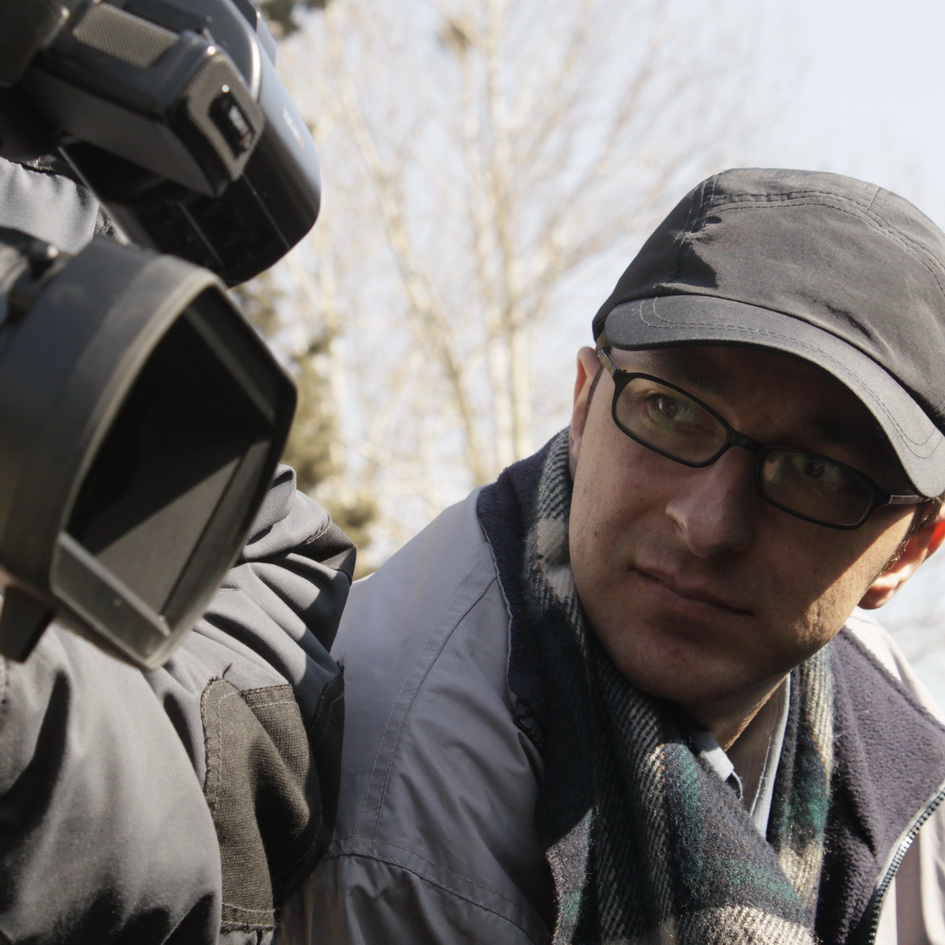 Hesam Dehghani, from Tehran, Iran, first learned of CollabFeature from the film website mandy.com. He was intrigued by the opportunity to work on an international project with filmmakers from around the world, and has been impressed with the diversity of cultures on the Train Station project:
Hesam Dehghani, from Tehran, Iran, first learned of CollabFeature from the film website mandy.com. He was intrigued by the opportunity to work on an international project with filmmakers from around the world, and has been impressed with the diversity of cultures on the Train Station project:
Hesam Dehghani: “Working on a project with other filmmakers from different countries is a unique experience. In this system, you should put away your own likes and dislikes and learn to ‘collaborate’ with other artists. It is amazing and you learn so much from others.”
Hesam’s segment in Train Station begins when Man in Brown, or in his case, Woman in Brown (played by Shirin Esmaeeli), accepts the offer of two strangers to give her a ride home after she was unnerved by a mysterious man who she thought was following her. However, the seemingly friendly strangers make her even more uncomfortable when they ask inappropriate and probing questions about her life.
HD: “I wanted to have some kind of twist in my segment, and working on that ‘nice’ couple was a good point to start. I had two minutes to convey the feeling of escaping from one uncomfortable situation and falling into another one, by the ones who were supposed to help you come out of the first one!”
The shoot took two days at a cost of 150 million Rials (about $5,000 USD), and was financed by Hesam’s production company, Persian Magic. The shoot had a 10-person crew and used a Sony EX3 camera.
Locations were in the city of Tehran, the capital of Iran.
HD: “I specially selected the route and direction of the ride in a way that The Milad Tower, which is the symbol of Tehran, can be seen in the background. We also used it as a main background of the walking footage.
Tehran is a very large city, with 10 million people living in it. It is the third largest city in the Middle East and you can see both old and modern buildings in it. South of Tehran is kind of old, with more population and north of Tehran is modern, with skyscrapers. The streets are wider and lush and houses are more pricey.”
The actors in Hesam’s segment are all speaking Persian, and their wardrobe is typical everyday Iranian dress. Though to an untrained eye the wardrobe seems similar to that in other Middle Eastern countries, there are important differences.
HD: “Many people who live in western countries think that Iran is an Arab country and women wear the same dress as Arab women do. Although Iran is an Islamic country, here women and girls do not wear that kind of dress. They do not cover their faces, and men do not wear Dishdasha (that special dress that Arabs wear).
Also, some Westerners think that Tehran is a desert, and that people ride on camels and live in tents! Sometimes my friends in other countries ask me “do you have the internet in your country?”… and that annoys me a lot. Having a segment in Train Station was a great chance for me to show that these thoughts are not true.”
Interview conducted by Diane Cheklich.
Check out Hesam’s: Blog | Facebook | YouTube | Twitter | IMDB
The story gallops in quite an enjoyable way. And the acting is good in almost every fragment in spite of so many transformations, emanations and incarnations.
Of course it’s a bit irritating when you start to attach yourself to one incarnation, one image of the central figure (Brown), when you begin to like the actor and the character and then – snap – he/she transforms in a second. It’s irritating. But it’s a good irritation. It questions and challenges our way of perception and appreciation of films and stories. Mechanics of the Pleasure of the Screen. Or perhaps our perception of life itself.
If it’s an alternative – this fragmented perception of the world – I’m not sure. It may lead to schizophrenia.
But wait… It’s happening anyway, all over the world inside everybody’s mind, as time and life are speeding up exponentially, madly, every day, every minute.
So this rapid and permanent change of the central Persona (and everything else) in the movie, works like an elegant reflection/metaphor of our modern psyche – fragmented, disoriented, spinning, disappearing, convulsing, but still working somehow, desperately trying to cling to the semi hallucinatory logic of sequence, the string of life which is represented in the movie by the Plot (the narrative connecting the segments).
But there is another question rising out of this funny and demonic action kaleidoscope, this spiral motion of the Plot. It’s bifurcation or choice. (Creators of the movie are extremely interested in this problem of choice and openly demonstrate it many times in many ways. In fact it’s their basic theme)
By the way, kaleidoscope means beautiful shape in Greek. So let’s talk about it.
 As the movie is more conceptual than psychological, in my view (psychology is not it’s strongest or most important point), we must concentrate more on the philosophical messages it contains, than on the dramatic aspect of the story(ies). Because it’s narrative, it seems to me, here works as some kind of carcass or structure or form – a container for the Content. This Content is philosophical. And there is the problem of bifurcation (map of possibilities in the heroes mind) and of choice (his/her imminent action).
As the movie is more conceptual than psychological, in my view (psychology is not it’s strongest or most important point), we must concentrate more on the philosophical messages it contains, than on the dramatic aspect of the story(ies). Because it’s narrative, it seems to me, here works as some kind of carcass or structure or form – a container for the Content. This Content is philosophical. And there is the problem of bifurcation (map of possibilities in the heroes mind) and of choice (his/her imminent action).
Of “Either – Or” (not necessarily in Kierkegaardian sense).
But now we plunge into the deep sea. Or the shallow depth of the blindly enigmatic Ocean of Fate.
What does the movie say about choice except showing the very process of choosing?
Nothing.
The Creators do not have an answer and they don’t even try to look for it. So is this philosophy or the end of philosophy? Or both?
I think, they should have tried to go a little bit deeper, especially in a conceptual film (as I see it).
But I may be wrong. Maybe it’s the “variety of life”, “the multi-faceted nature of human existence” that they are trying to represent here. If that is the case it automatically stops looking elegant to me. Remember kaleidoscope, that is beautiful shape. This work must not loose it’s beautiful form by trying to display reality. And it does not. As I said, I’m not impressed by the drama/psychology side of this work. And I don’t think it needs them. I don’t think this movie needs to imitate reality because it’s not realistic art. Of course it’s the question of interpretation. But I want to look at it as a manifesto, as something quite abstract and conceptual, pretending (with much fun and taste) to be realism. It pretends that it is imitating life. But it does not and it does at the same time. Because it’s the Fractal reproducing itself endlessly and beautifully and senselessly.
It’s the beautiful Form and the inconceivable Idea – that’s how it reflects incomprehensible reality of our existence. I mean, the movie. The spiral of the movie.
“Art is the shadow of reality”, Mishima said. So art seems pathetic. But if you turn to philosophy or absence of philosophy (what I believe was the intention of this film , conscious or semi conscious) – everything falls into right places. And now art can at least ask essential questions.
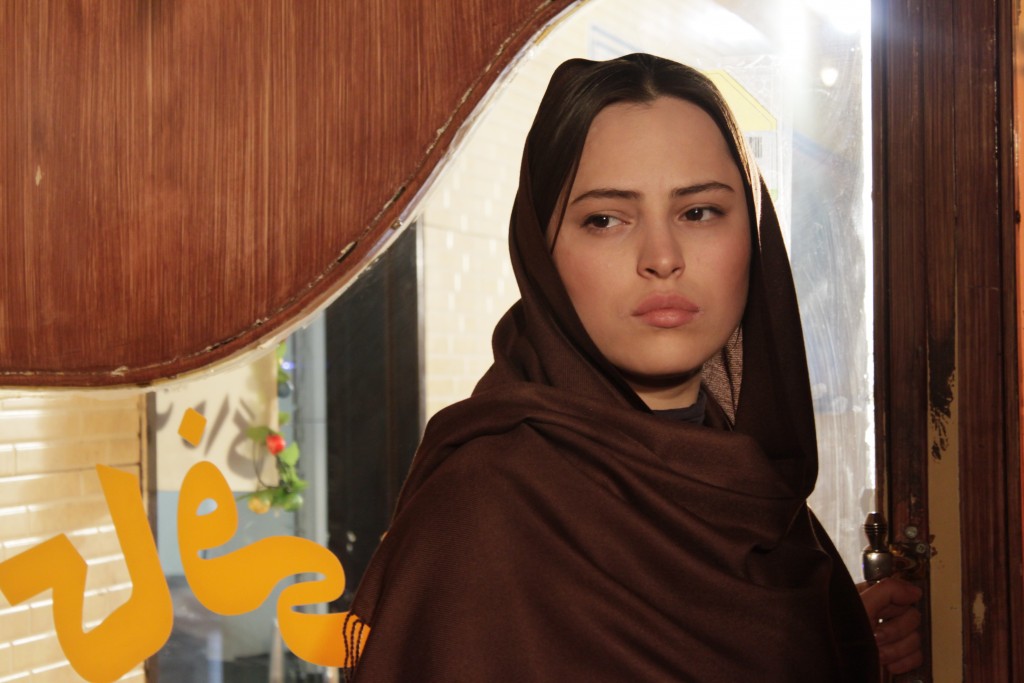 There are no answers. And there will never be. But there’s a game to be played. And Train Station looks like quite a good version.
There are no answers. And there will never be. But there’s a game to be played. And Train Station looks like quite a good version.
Now, let’s go back to instinctive teleology, that is to Choice, Destiny and Fate. Introduction of vertical dimension (or spirituality) in the final episode of the film is not really working. This attempt of summing something up…looks weak, naïve and sentimental. And what’s worse – obligatory. I don’t believe that those two at the station can hear something. Maybe the old blind man, but not the young one. Even if he closes his eyes. No train is coming. Or if it is – It’s the train of civilization which has run amok and can’t hear or feel itself anymore, because everything inside and outside is just this permanent and absolute Noise. The Noise of Madness that has devoured subtle Music of the Spheres long time ago.
So I don’t believe that those two can hear something…ineffable. Two bums waiting for Godot 60 years ago were more sincere. They did not pretend to have hope. They said: “Let’s hang ourselves.” But even death was too boring for them.
There is no hope. Status is unknown. The heroe(s) of this movie operate in ostensibly multi dimensional , but really one dimensional space. Speaking symbolically, of course. Or maybe the hero is this single elementary particle that runs around really fast and makes up the whole Universe. But that’s just some clownish cosmological theory or fundamental solipsism and monadism of human condition. Anyway, there is no hope. And the final episode is really cool to watch. If only two men did not speak to each other at all…
Somewhere around the middle the movie slowly becomes overloaded and tiresome. There are just too many twists of the plot, too many changes and transformations, and in fact, too many faces. You try to remember all those nice, interesting episodes, but the film just keeps pumping on. And then the tension falls, and you really start to feel fatigue. And the narrative actually becomes more and more erratic.
The beautiful absurdity of the Fractal is changing into the nuisance of Chaos.
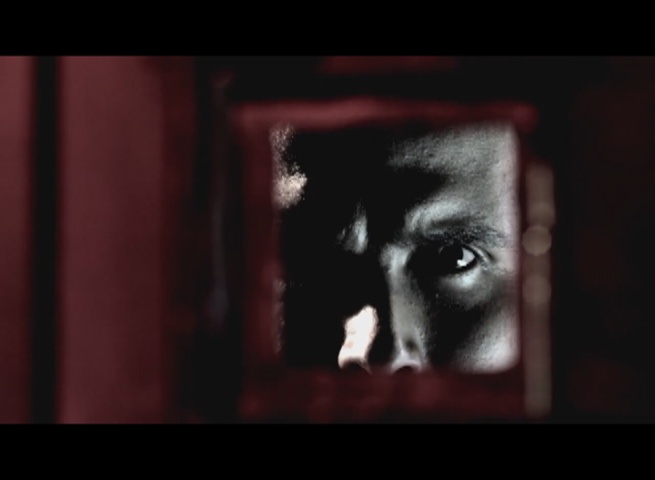 At that point, while still watching, I suddenly remembered Stoppard’s “Rosencrantz and Guildenstern are Dead” – when they toss the coin and get “heads” one hundred times in a row. I remembered their sad and stupid expressions at the time when Train Station started to tire me.
At that point, while still watching, I suddenly remembered Stoppard’s “Rosencrantz and Guildenstern are Dead” – when they toss the coin and get “heads” one hundred times in a row. I remembered their sad and stupid expressions at the time when Train Station started to tire me.
Train Station is certainly no chess game. Chess symbolically lost it’s secret after the famous Kasparov vs. Deep Blue duel. Today, the more science and technology we get, the less and less logic or Logos is left in our lives and our souls. Logos is evaporating and in fact our destiny is evaporating, too. Now it’s the law of Nonsense, not the laws of probability at work. Even when you refuse to play chess and prefer to throw dice instead.
It’s always the non-destiny, collective and personal that shows it’s faceless face when you look around the corner of the empty street. It’s not even the face of a clown. It’s not your own distorted reflection. It’s something else. Horrible and indifferent. Stupid and apathetic.
To say – it’s the Void – is to say nothing.
You have to make a choice.
Because of the funny thing called self respect.
You have no choice.
GOOD MOVIE. NICE EXPERIMENT. THUMBS UP.
Tomas Sinkariukas ___________________________________________________________
Some info about the author: http://www.kamane.lt/eng/Kamane-s-texts/2013-year/May/Literature/The-world-according-to-Tomas-Sinkariukas
CollabFeature was proud and thrilled that "Train Station", our second international, collaborative feature film, had its World Premiere at the 18th annual East Lansing Film Festival on Friday, November 6, 2015! ELFF is the largest film festival in Michigan. ELFF takes place on the campus of Michigan State University. Over the last 18 years, the festival has screened nearly 2000 films and has hosted celebrity filmmakers and actors such as Oliver Stone, Michael Moore, and Bruce Campbell.[Best_Wordpress_Gallery id="2" gal_title="World Premiere of TRAIN STATION at East Lansing Film Festival"] “Train Station” follows a single character played by 40 different actors from all over the world. When a mysterious train accident forces our character, known only as “Character in Brown”, to change his plans, he is confronted with a series of choices, some big, some small. Each decision he makes leads to a different scenario, each one filmed by a different director with a different cast. PHOTOS BY SAS.